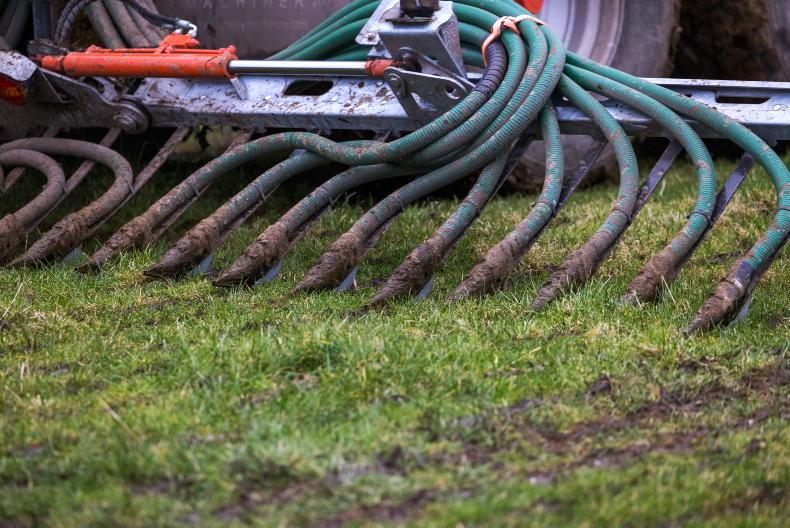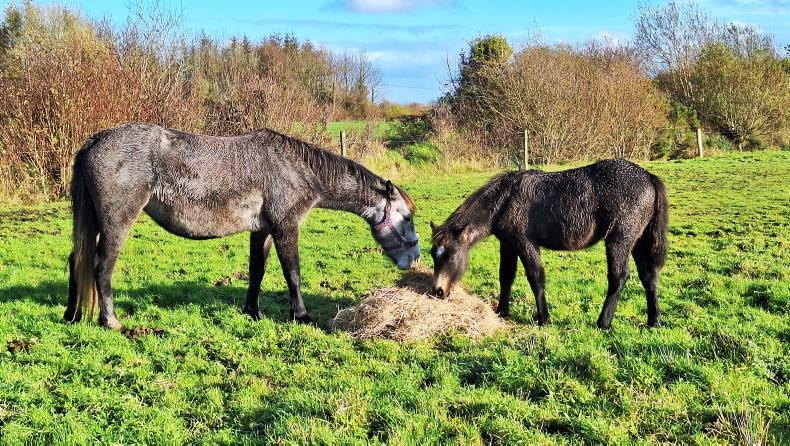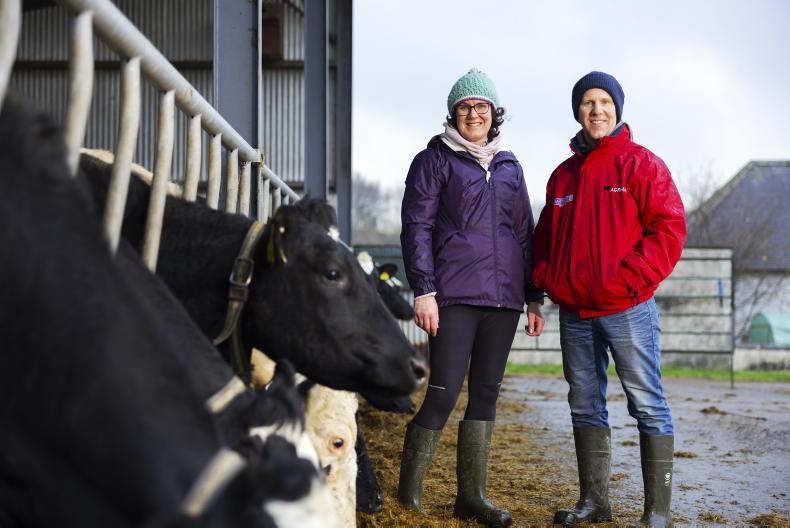As Ireland is part of the European Union, we are subject to legislation drawn up by the European Commission, such as the Water Framework Directive (WFD).
The WFD enables a comparison across all water monitoring throughout Europe by assigning a “status” or quality index to each water body.
For surface water, the status can range from ‘high’ to ‘bad’, using five categories, somewhat similar to carcase classification for cattle. The water status can be either bad, poor, moderate, good, high or unassigned (Figure 2). The WFD objective is for all water to be either ‘good’ or ‘high’ status by 2027.
So, what is measured to assign this status?
Well, it depends on what type of water is being monitored. There are four different types of surface water: rivers, lakes, estuaries and the sea, and different things are considered when measuring the status of each.
In lakes, for example, the concentration of phosphorus required for high status is more stringent than that for rivers, while phosphorous concentration isn’t considered at all for sea water.
For this reason, the term ‘water quality’ can be misleading as it is a very broad term. The river Slaney is a good example (Figure 1). In the EPA’s most recent Water Quality in Ireland report, the river Slaney is ranked 13 out of 46 river catchments in the country. Not bad, but that’s not all.
The river Slaney catchment also showed the highest number of improvements when compared with the previous report, with 24 of 95 monitoring sites on the river improving.
Nitrate levels
However, it is important to be aware that nitrate on its own is not considered when assigning status to a river monitoring point. It is measured, and we know the concentration levels, which could be high or low, but it’s not a major factor when deciding if a river is ‘high’ or ‘good’ status.
Nitrate generally has a bigger impact on what’s living in the estuarine and sea water. Phosphorous, on the other hand, is more likely to upset fresh water in rivers and lakes.
This can result in the somewhat unexpected scenario where rivers that are classified as ‘high’ and ‘good’ status being the source of nitrate that ends up in estuaries, having a negative impact on the life and ecology in the tidal part of the catchment.
How much nitrate is a problem for the estuary?
Ideally, the concentration of nitrate-N leaving the river as it enters the estuary should be below 2.6mg/l. In free-draining soil types, such as those common along the Slaney valley, this can be difficult to achieve. The river Bann is a tributary of the Slaney, and it is mostly (73%) ‘high’ or good’ status, as can be seen on Figure 1.
However, nitrate concentrations in the Bann are higher than what is required to achieve good status in the estuary.
Figure 3 shows the nitrate N concentrations at the Ballydaniel Bridge monitoring point from 2016 to 2022.
They go up during the winter and drop at the end of the summer. On average they are 5.25mg N/l, which is twice the level desired for rivers entering the estuary.
Free-draining soils
This type of scenario is not unusual. Many of the rivers along the south coast are flowing through light and free-draining soils, and have high levels of nitrate entering their estuaries. Further upstream, these same rivers have a higher proportion of monitoring points achieving ‘high’ and ‘good’ status. The Bandon, Lee and Blackwater catchments all have this characteristic.
Hopefully this demonstrates that there are many separate, different and often contrasting factors that determine ‘water quality’. And if we are to see an overall improvement across the country in our rivers, lakes and estuaries, we need to be focusing on the problem that is relevant either to:
The location you’re in; or Somewhere downstream in the location that is receiving the water flowing through your land, most likely a lake or estuary, possibly many miles away. Actions
The actions necessary to see improvements in both locations can be, and often are, completely different.
Where there are problems, it is necessary to target them with the correct practice. To explain this, I sometimes use the analogy of going to a doctor with an ingrown toenail. If the doctor takes out your appendix it’s not much help. And so it is the case with water quality – the correct action must be taken in the correct place to have the desired effect.
Edward Burgess works with the Agricultural Catchments Programme, which is informing many actions in Teagasc’s Better Farming for Water campaign.
As Ireland is part of the European Union, we are subject to legislation drawn up by the European Commission, such as the Water Framework Directive (WFD).
The WFD enables a comparison across all water monitoring throughout Europe by assigning a “status” or quality index to each water body.
For surface water, the status can range from ‘high’ to ‘bad’, using five categories, somewhat similar to carcase classification for cattle. The water status can be either bad, poor, moderate, good, high or unassigned (Figure 2). The WFD objective is for all water to be either ‘good’ or ‘high’ status by 2027.
So, what is measured to assign this status?
Well, it depends on what type of water is being monitored. There are four different types of surface water: rivers, lakes, estuaries and the sea, and different things are considered when measuring the status of each.
In lakes, for example, the concentration of phosphorus required for high status is more stringent than that for rivers, while phosphorous concentration isn’t considered at all for sea water.
For this reason, the term ‘water quality’ can be misleading as it is a very broad term. The river Slaney is a good example (Figure 1). In the EPA’s most recent Water Quality in Ireland report, the river Slaney is ranked 13 out of 46 river catchments in the country. Not bad, but that’s not all.
The river Slaney catchment also showed the highest number of improvements when compared with the previous report, with 24 of 95 monitoring sites on the river improving.
Nitrate levels
However, it is important to be aware that nitrate on its own is not considered when assigning status to a river monitoring point. It is measured, and we know the concentration levels, which could be high or low, but it’s not a major factor when deciding if a river is ‘high’ or ‘good’ status.
Nitrate generally has a bigger impact on what’s living in the estuarine and sea water. Phosphorous, on the other hand, is more likely to upset fresh water in rivers and lakes.
This can result in the somewhat unexpected scenario where rivers that are classified as ‘high’ and ‘good’ status being the source of nitrate that ends up in estuaries, having a negative impact on the life and ecology in the tidal part of the catchment.
How much nitrate is a problem for the estuary?
Ideally, the concentration of nitrate-N leaving the river as it enters the estuary should be below 2.6mg/l. In free-draining soil types, such as those common along the Slaney valley, this can be difficult to achieve. The river Bann is a tributary of the Slaney, and it is mostly (73%) ‘high’ or good’ status, as can be seen on Figure 1.
However, nitrate concentrations in the Bann are higher than what is required to achieve good status in the estuary.
Figure 3 shows the nitrate N concentrations at the Ballydaniel Bridge monitoring point from 2016 to 2022.
They go up during the winter and drop at the end of the summer. On average they are 5.25mg N/l, which is twice the level desired for rivers entering the estuary.
Free-draining soils
This type of scenario is not unusual. Many of the rivers along the south coast are flowing through light and free-draining soils, and have high levels of nitrate entering their estuaries. Further upstream, these same rivers have a higher proportion of monitoring points achieving ‘high’ and ‘good’ status. The Bandon, Lee and Blackwater catchments all have this characteristic.
Hopefully this demonstrates that there are many separate, different and often contrasting factors that determine ‘water quality’. And if we are to see an overall improvement across the country in our rivers, lakes and estuaries, we need to be focusing on the problem that is relevant either to:
The location you’re in; or Somewhere downstream in the location that is receiving the water flowing through your land, most likely a lake or estuary, possibly many miles away. Actions
The actions necessary to see improvements in both locations can be, and often are, completely different.
Where there are problems, it is necessary to target them with the correct practice. To explain this, I sometimes use the analogy of going to a doctor with an ingrown toenail. If the doctor takes out your appendix it’s not much help. And so it is the case with water quality – the correct action must be taken in the correct place to have the desired effect.
Edward Burgess works with the Agricultural Catchments Programme, which is informing many actions in Teagasc’s Better Farming for Water campaign.









SHARING OPTIONS